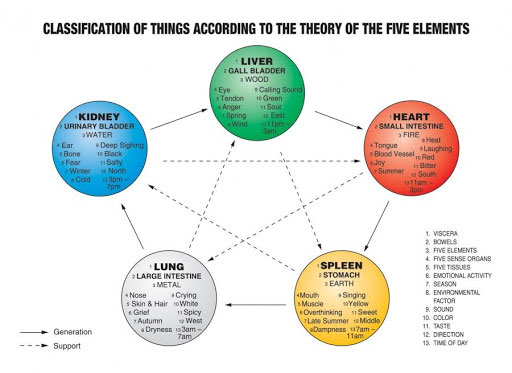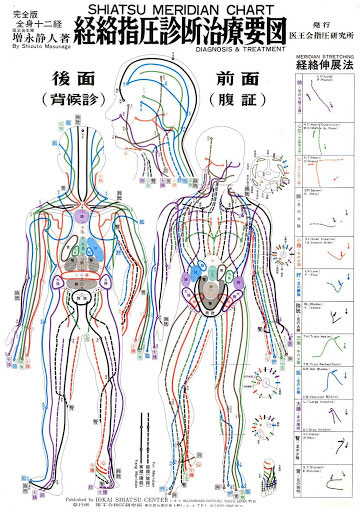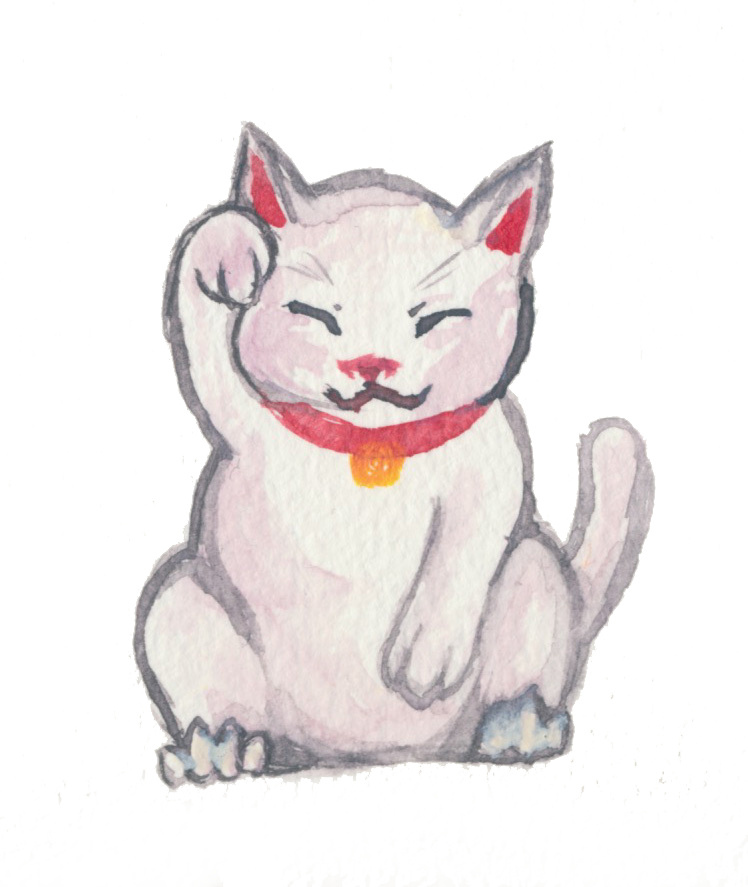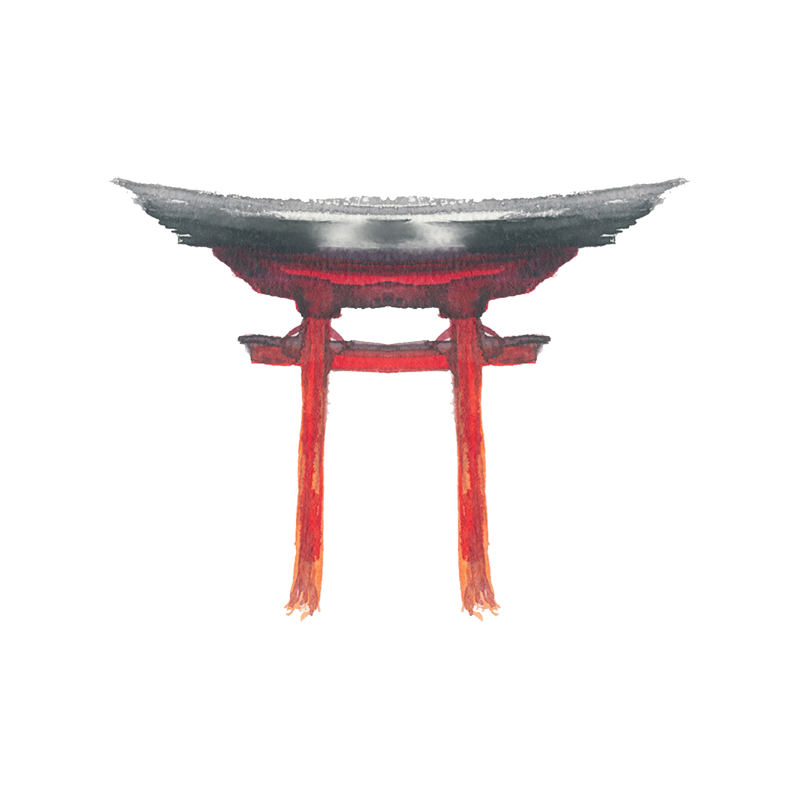Follows 5 Element Theory:


WHAT ARE MERIDIANS?
12 distinct patterns or energy lines that run through your body and bring life force(‘ki’, ‘chi’, ’prana’) to every cell Relate to specific organs, organ functions and emotional states Connected to the seasons, 5 elements and specific times of the day
Each season has two meridians, except for Summer, which has four:
Autumn= Metal Element = Lung (3am-5am)+Large Intestine(5am-7am)
Winter = Water Element = Bladder (3pm-5pm)+Kidney(5pm-7pm)
Spring = Wood Element = Gall Bladder (11pm-1am)+ Liver(1am-3am)
Summer = Fire Element = Heart (11am-1pm)+Small Intestine(1pm-3pm)+Heart Constrictor(7pm-9pm)+Triple Heater(9pm-11pm)
Late Summer/between Seasons = Earth Element = Stomach (7am-9am) + Spleen (9am-11am)
Are like a river of energy- they begin at a specific point in the body and flow down or up (depending on the meridian) to another point When the ‘river’ (ie meridian) is dammed and blocked, two things can happen: life force is blocked from getting to a specific area of the body and that area goes ‘dry’(called ‘kyo’) OR one part of the river ‘floods’ and gets too much energy (called ‘jitsu’)
Cells, tissues, whole body organs and emotional states can suffocate from lack of, or oversupply of ‘ki’- the result is what’s commonly called a ‘symptom’ Blocked meridians appearing as symptoms can be unblocked via Japanese Yoga for specific healing (plus improved diet, shiatsu, other healing modalities): Eg: Anxiety often relates to fear which may indicate an unbalanced Water element- where Bladder + Kidneys are the dominant meridians. We could do poses for Bladder and Kidney to support and heal anxiety (at anytime of year, not just winter)
ARE THERE DIFFERENT STYLES OF JAPANESE YOGA?
I use Japanese Yoga as an umbrella term for physical poses, philosophy aligned with Japanese arts or ‘ways’, moral codes and lifestyle choices. Just like most religions have different traditions within them, Japanese Yoga also has different schools. Although all unique, schools that share aspects of this philosophy include: Ryoho, Zen Ki, Okidō, Ki Yoga + Shin Shin Toitsu Dō. The physical poses I teach are a style of Japanese Yoga known as Zen Ki Yoga®. I’ve had many Japanese Yoga teachers on my journey so far and can’t wait to meet many more. Special acknowledgement to Jack Marshall and Dale Fox (Zen Renaissance Healing Centre), Chuya Hashimoto (Marobian), Loraine Rushton (Zenergy Yoga), Janie Larmour (The Centre of Yoga), Andzej Gospodarczyk (Ryoho Yoga) and Beth Cowling (The Yoga Space).

HOW DOES JAPANESE YOGA FIT WITH ESSENTIAL OILS?
- Japanese Yoga is very powerful healing tool on its own: it taps into our body’s ability to self-heal.
- Similarly, essential oils leverage our body’s ability to self-heal.
- Japanese Yoga + Essential Oils don’t heal conditions, per se. They support you to return to a state of balance where your body’s able to heal herself from within.
- Combining Japanese Yoga + Essential Oils amplify the benefits and effects of each other and greatly support your body’s ability be in balance and self-heal.
- Japanese Yoga + Essential Oils are most effective when used consistently. Eg Diffuse nightly, during the day and use before your regular Japanese Yoga class.
- Apply rollerbottle blends to specific meridian points to harness essential oils for emotional and physical support.
- Notice how physical symptoms tend to fade away when you support your emotions.

